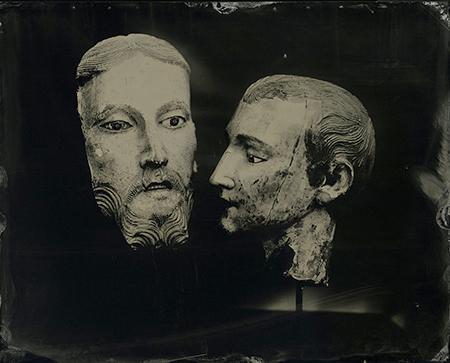
Continuing through February 28, 2015
Historical photographic processes seem the perfect vehicle for Brenton Hamilton’s cerebral, layered compositions, which appropriated images of classical statuary, scrolls, artifacts and antique scientific illustrations to suggest dreamlike states.
The blues of the cyanotype process give off the requisite mysterious aura to a print such as “Grotesquery,” where giant leaf-like forms serve as wings on a headless, half-nude figure. Similarly, “Cloud Spinner” superimposes what could be a wire maquette onto a cutout of a Renaissance-era female face. Many of the works take liberties with Greek mythology and the heroic nude form, as well as anatomical illustrations and botanical images, for a strong run at allegory. A viewer’s takeaway from “The Astronomer,” one of Hamilton’s best prints, might include thoughts on man’s predisposition to explore new worlds, or perhaps the perils of science. The composition brings together a medical diagram of a torso, an orb and indecipherable script.
Meanwhile, Hamilton’s use of the black-glass ambrotype process lends an antiquarian feel to a series of 8-by-10-inch studies of eroded busts, lifelike hands and other curiosities. The series is inspired by the “Wunderkammer,” or cabinet of curiosities, which originated in 16th century Europe. As with the cyanotypes, there is a feeling of drifting through time.
